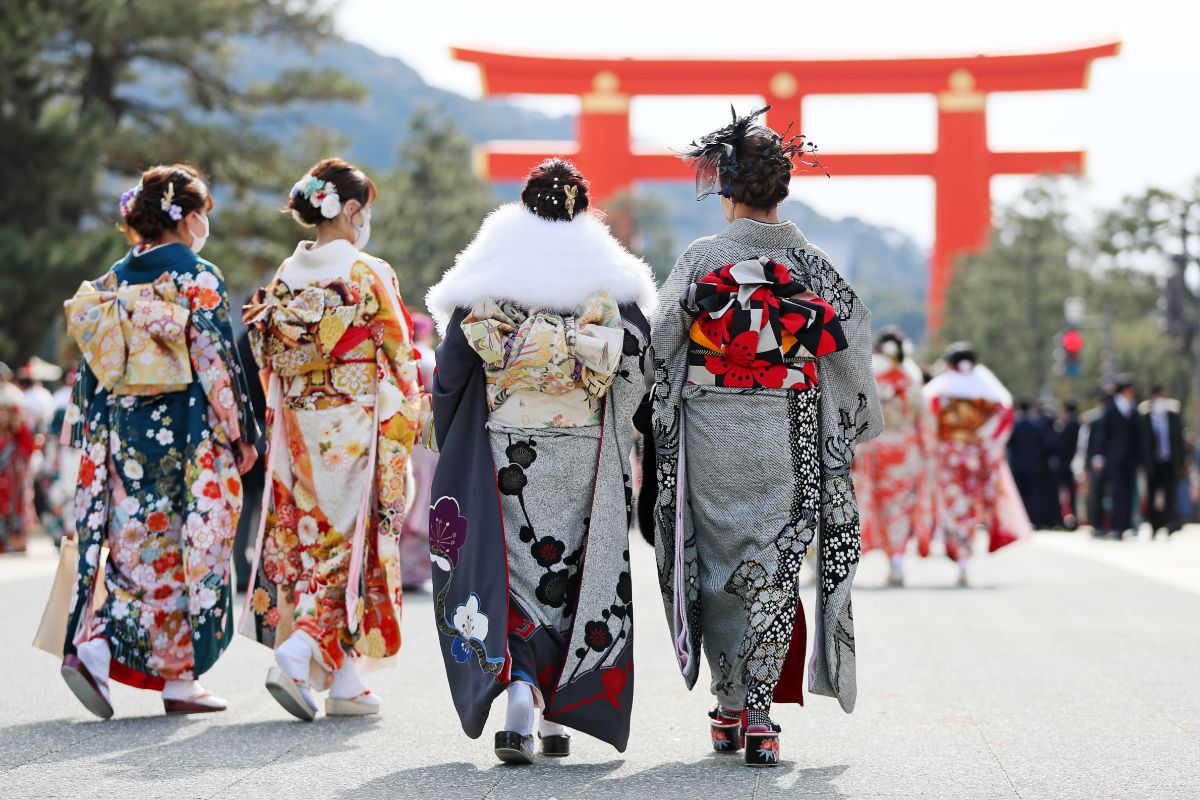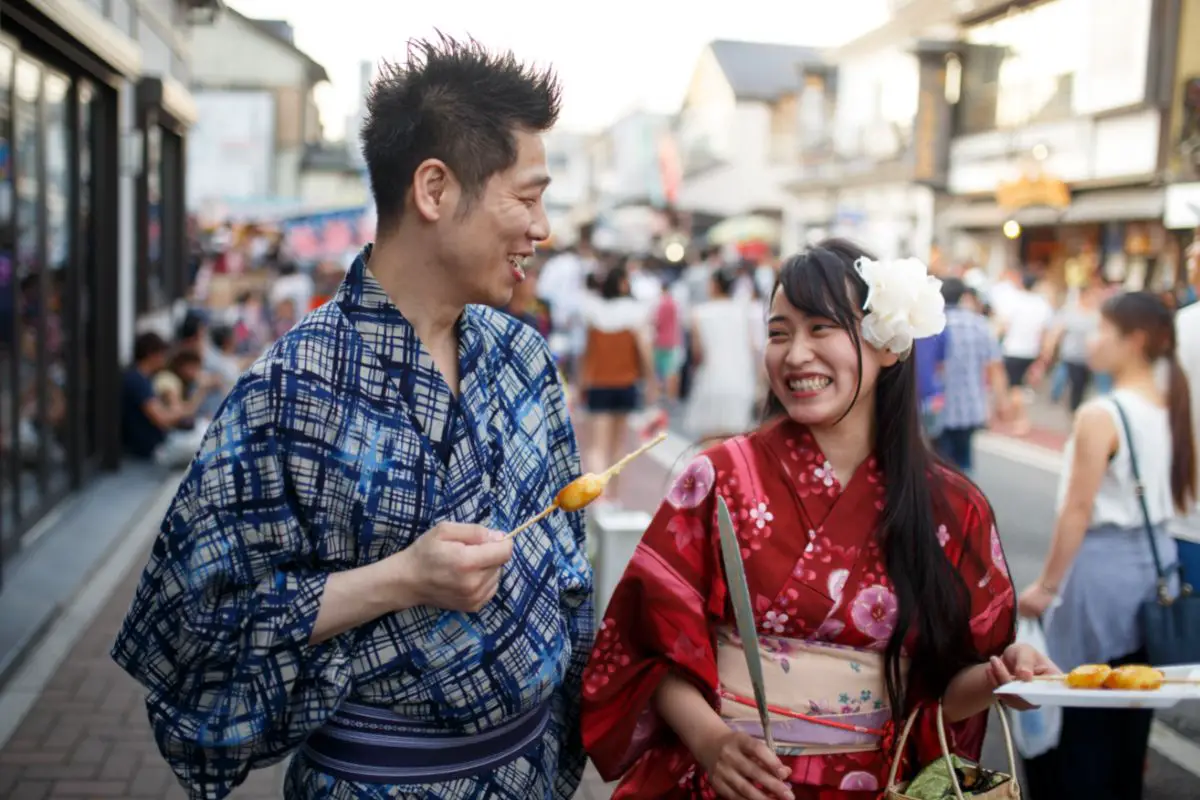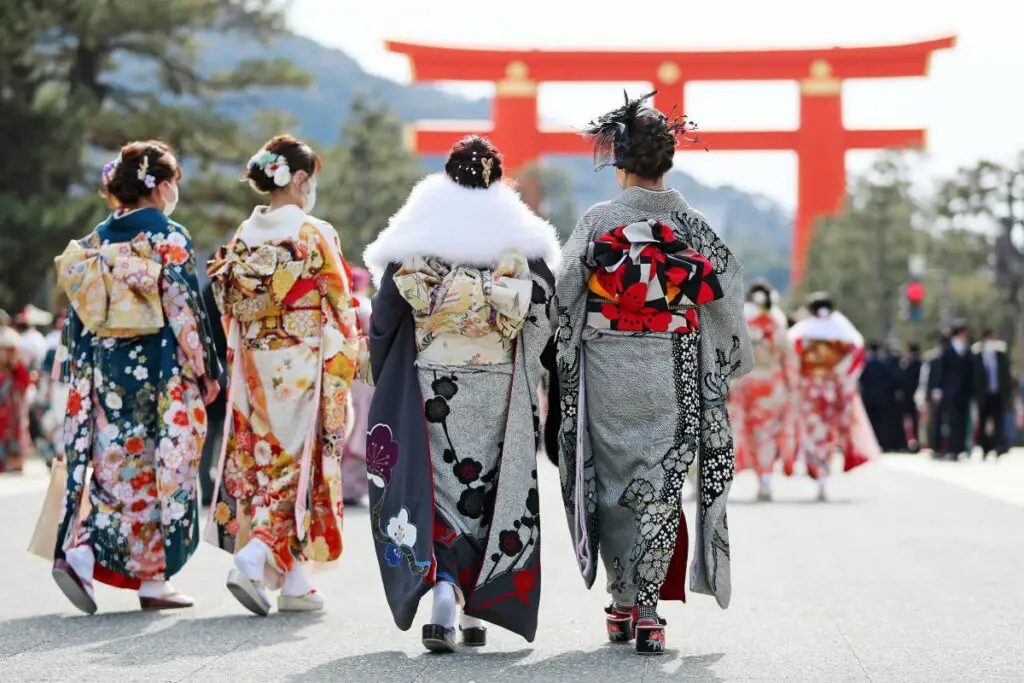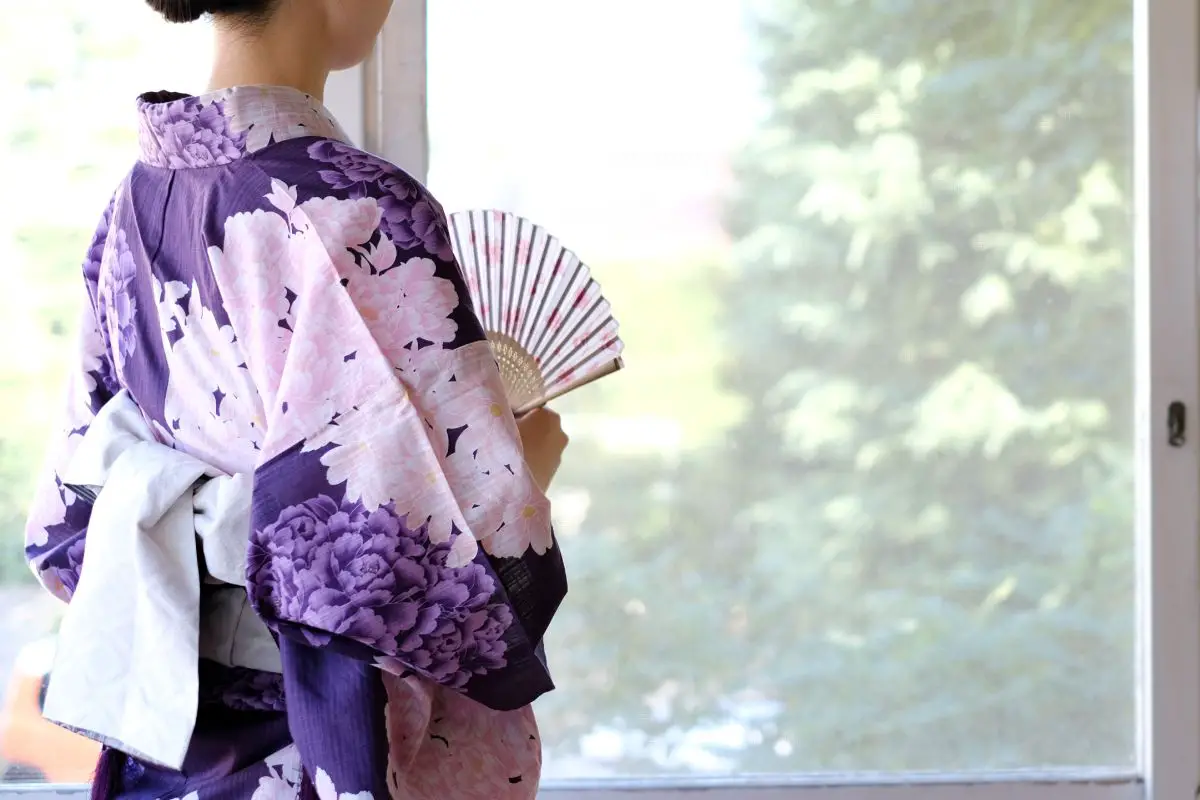Many people unfamiliar with Japanese fashion can get confused by the difference between a kimono and a yukata. There are many different types of kimono, and while yukata is one of them, they have several differences.
To help you understand the difference, we’ll go into more detail about the history behind these styles, so you understand why they aren’t interchangeable.

What Is A Kimono?
The kimono is a popular garment in Japan and is often the first type of clothing to come to mind when thinking about traditional Japanese outfits.
The literal definition of kimono is “thing to wear,” so they were not initially designed for any specific occasion. However, they do have a specific look to them.
Kimonos are made using T-shaped robes that are worn over another silk robe. Men and women can wear them, but generally, they are more popular as a fashion choice among women.
Nowadays, they are worn as formal wear to events and aren’t often worn as a fashion choice unless you wear one for work.
What Is A Yukata?
A yukata is a type of kimono; however, it was initially designed as a type of bathrobe. They’re traditionally worn in the summer and are a regular sight at festivals.
Unlike kimonos, they don’t have a lining and are for more casual wear. Nowadays, they aren’t worn as a bathrobe unless you visit an onsen town, where they are given to visiting guests as a gift.
Like kimonos, yukatas are made using T-shaped robes; however, instead of being made of silk, they are made of cotton. They are made from cotton because cotton is a better material used to absorb moisture.
As they were designed to help absorb moisture when leaving the bath, they are still worn in the summer to absorb any sweat.
What Is The Difference Between A Kimono And Yukata?
We briefly touched upon the differences between the two types of kimono, but let’s go into a little bit more depth on how they differ.
After all, many visitors can easily become confused between the two types of garments. To help you, we’ve isolated the differences and gone into more depth into how they’re so different.
Their Materials Are Different
Kimonos are traditional and more expensive than the yukata, which is more informal, despite its traditional nature.
As kimonos are made from silk or brocade and have at least two collars, they are seen as a luxury.
However, yukata were designed as bathrobes for Japanese nobility to help them cool down after a bath. Yukata aren’t made with silk or expensive materials, as they wouldn’t absorb the moisture from the bathwater.
Instead, they are made with cotton or polyester to get the best results.
Due to the different materials, they can be bought at different prices. While kimonos and yukatas can be purchased in different materials, it doesn’t mean that they are too similar.
In fact, one of the key differences between them outside of their materials is their shape.

Their Shape Is Different
Kimonos and yukatas have different collars. Yukatas have a stiffer collar that is only half as wide. However, kimonos have soft, full-width collars, as they are made from softer materials.
You’ll also find that a kimono has at least two collars, while a yukata will only have one collar since there is no collar underneath.
Likewise, they have different sleeve shapes. Kimonos often have longer sleeves, but they can vary depending on the formality of the event they’re being worn at.
However, yukatas often have shorter sleeves that are never longer than 50 centimeters. In the past, single women would wear kimonos with longer sleeves so that eligible bachelors could identify who was available for marriage.
However, there are also kimonos that have medium-length sleeves instead.
They’re Worn On Different Occasions
Previously, we mentioned that kimonos could be worn on formal occasions, and nowadays, they are known for being formal attire.
Kimonos are regular sights at weddings and may also be worn at graduation ceremonies and funerals. Many people may also still wear kimonos for work too. However, yukatas are not necessarily as formal.
Summer events are one of the most popular times of year to see yukatas. Many people will attend summer festivals wearing their yukatas.
Many yukatas have bright colors and patterns, while kimonos have more luxurious prints. If you’re attending a summer festival and fireworks displays, you’ll notice men, women, and children wearing yukatas and enjoying the festivities.
They’re Worn During Different Seasons
Kimonos are often heavier and thicker than yukatas, so you’ll find they’re a much more common sight in winter.
Many kimonos only have one layer of silk and have other layers within. While you can find kimonos worn during the summer months, these types are shorter but are still made of silk.
Likewise, yukata are worn often in the summer months while outside.
They’re often made from a lightweight, breathable material that helps absorb moisture. Yukata have shorter sleeves and are widely worn at summer festivals for this reason.
You Don’t Have To Wear Socks With Yukatas
Kimonos are more formal, so it is essential to wear white tabi socks with a pair of geta or zori sandals. However, yukatas can be worn without tabi socks. Instead, anyone wearing yukatas can wear their geta or zori with bare feet.
As yukatas were designed for being worn after a bath, they are much less formal. Instead, you can slip into your pair of geta without having to worry about putting socks on.
Final Thoughts
We hope that with the help of our guide that you don’t have any more issues identifying the differences between kimonos and yukatas.
When visiting Japan, you’ll be able to understand when you should wear a kimono or yukata.
Plenty of places allow you to rent a yukata or kimono for a day, so why not try wearing one yourself if you’re going to visit Japan in the summer?









